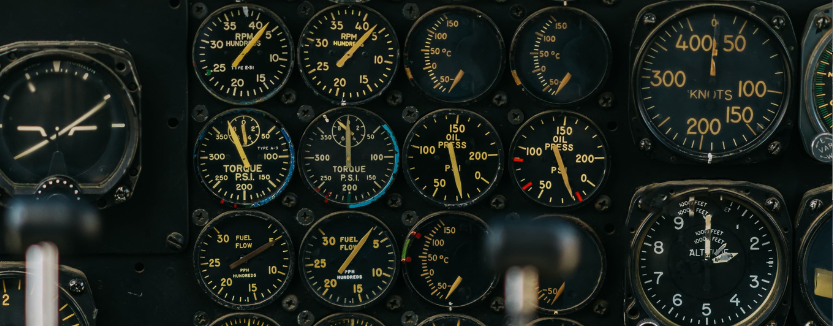The flight deck is one of the most interesting parts of the aircraft. Everyone is curious to know what it is like, who works in that room and what instruments it has. If you want to be a pilot, the flight deck will be your working environment and knowing it in depth will allow you to be a better professional.
The flight deck is the part of the aircraft from where the pilots control and direct the aircraft to its destination. It contains all the components that the crew needs to fly the aircraft and control its correct operation.
 What is the flight deck?
What is the flight deck?
The cockpit is located at the front of the aircraft. Its location, combined with the shape of the aircraft, allows the pilot perfect forward and side visibility.
The origin of the covered cockpit dates back to 1913, when Igor Skorsky Le Grand used the first one. Even so, in the following years, aircraft with open cockpits were used. It was not until the 1950s that open cockpits practically disappeared and the development of the cockpit that we use today began.
What does a flight deck look like?
The cockpit is the nerve center of the aircraft and the entire course of the flight depends on it. It is very important to provide the crew with all the information they need to fly the route quickly and easily.
The cockpit must be ergonomic and keep all the instruments that the pilot may need during the flight within easy reach. In addition, it must also offer easy access to ground communication devices.
Who works in this space?

La cabina tiene un espacio reducido y, por lo tanto, es muy importante que solo esté las personas necesarias para desarrollar el vuelo. En el habitáculo encontraremos:
- Commander: He is the highest authority in the aircraft and can be recognized because he wears 4 bars on his epaulets. In the cockpit he always sits in the pilot’s seat on the left side of the cabin.
- Copilot: The copilot is the second pilot and can be recognized because he usually wears 2 strips on his epaulets. The co-pilot always sits on the right side of the cockpit.
- The flight engineer: This figure is not always present and is responsible for the operation of the engines and other technical controls. The engineer sits behind the co-pilot in the flight deck.
Cabin instruments
In the flight deck, as we have said, we find all the instruments necessary to develop the flight. Among the most frequent instruments found in the cockpit are:
- Anemometer: the equivalent of the speedometer in cars. It shows you the speed of the airplane with respect to the air.
- Altimeter: It is the instrument that marks the height of the stock.
- Variometer: This is the instrument that shows whether the aircraft is climbing, descending or level.
- Turn coordinator: this marker indicates the turn level of the aircraft.
- Artificial horizon: this tool shows the orientation of the aircraft with respect to the horizon.
- Power indicators
- Motor operating status indicators
- Compass: allows the pilot to know the aircraft’s heading
- Heading indicator: this instrument allows the pilot to know the direction of the aircraft in magnetic degrees.
- ADF (Automatic Direction Finder)
- DME (Distance Measuring Equipment)
- CDI (Course Deviation Indicator)
- ILS (Instrumental Landing System)
- Autopilot: The autopilot allows you to maintain heading, altitude and speed for long periods of time.
- Flight management system: it is a computer that allows you to program the route and fly manually or on autopilot.
The flight deck is a complex working environment that must be perfectly understood. To master it, good training and flight hours are essential. At EAS we offer pilot training in Barcelona and at Sabadell airport. If your dream is to work in a flight deck, come to EAS and start training!
